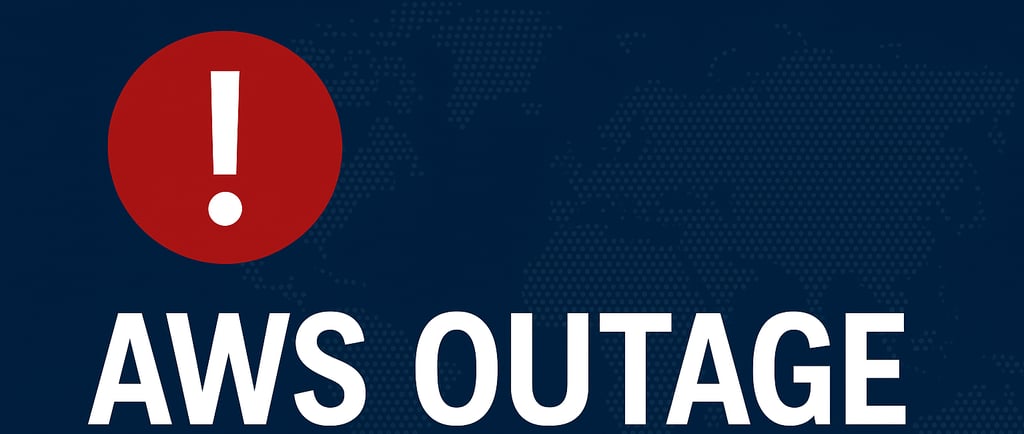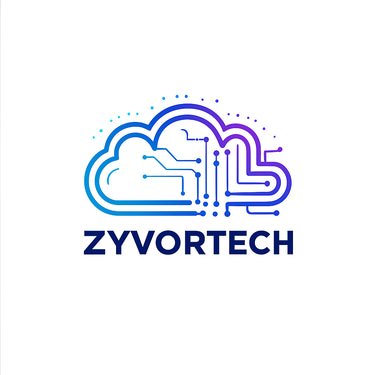AWS Outage: Immediate Steps & How to Build Resilient Cloud Architectures
A practical playbook for responding to the current AWS outage — immediate actions, DR checklists, and how ZyvorTech helps implement resilient, secure, multi-region architectures.
10/20/20253 min read


Context (what happened): Multiple news outlets and community reports indicate a major AWS incident earlier today that appears to have been concentrated in the US East (us-east-1 / Northern Virginia) region — the AWS dashboard first reported issues in that region in the early morning hours, with cascading effects across control-plane and region-scoped services. The outage disrupted many popular platforms (including Alexa, Fortnite, Snapchat and others) and produced widespread service degradation across numerous customer workloads; community telemetry and user reports described outages for voice assistants and other user-facing services. AWS posted updates as the incident progressed and reported signs of recovery over the morning as teams worked through queued requests.
When a cloud provider incident cascades through your stack it’s stressful — but there are immediate actions you can take (to protect customers and reduce business impact) and strategic investments you can make to prevent a repeat. Below is an operational playbook + architecture guidance ZyvorTech uses when responding to these events.
Immediate actions (first 60–120 minutes)
Communicate proactively — notify customers, partners and internal teams with an honest, concise update: what’s impacted, expected next update cadence, and interim workarounds. (Silence makes incidents worse).
Fail open to read-only / degraded mode — if your app relies on writable cloud services (databases, auth), switch to a read-only or degraded UX to preserve availability and data integrity.
Switch critical traffic to pre-provisioned failover — if you have an active/passive or multi-region setup, initiate your failover runbook now. If not, consider targeted throttling or rate-limits to keep core services alive.
Protect data & secrets — if IAM or STS is degraded, avoid automated credential refresh attempts that may create more failures; perform manual controls via out-of-band channels if needed.
Enable incident logging & snapshot state — capture logs, snapshots, and evidence for post-mortem and compliance. Don’t forget to enable forensic collection for any security alerts.
What this outage highlights about cloud risk
Cloud providers operate resilient infrastructure, but single-region or single-service dependencies still create business risk. Today’s incident shows how:
AWS service dependencies in a single region can cascade across unrelated customer workloads.
Highly integrated SaaS built on top of a single region or small set of services can be taken offline even if their own code is healthy.
These facts reinforce why a layered approach to resiliency and DR is essential — combining good architecture, tested recovery procedures, and clear communications.
Short-term remediation vs long-term resilience
Short-term (Tactical) — what we do in an incident
Run your pre-defined DR playbook (failover, degraded mode, backups restore).
Execute communications plan and customer-facing status updates.
Run containment steps for any security alerts and collect forensic evidence for post-mortem.
Long-term (Strategic) — what to invest in next
AWS and other cloud vendors document DR and resiliency best practices you should follow: design for multi-AZ and multi-region resilience, define clear RTO/RPO targets, and practice failovers periodically. The AWS Well-Architected Reliability pillar and AWS Disaster Recovery guidance provide formal strategies to plan and validate this work.
Key architectures to consider:
Active/Active multi-region for mission-critical services (lowest RTO, higher cost).
Active/Passive with automated failover for most business apps (balanced cost vs. recovery time).
Backup & Restore for non-critical workloads where longer RTO is acceptable. AWS publishes well-tested DR patterns and recovery options that map directly to business RTO/RPO choices.
Cloud security & governance during provider incidents
Security posture must not be neglected during an outage. Recommended practices:
Least privilege and just-in-time access to avoid elevated privileges being misused or remaining active during failover. AWS’s shared responsibility model clarifies which resiliency parts are AWS’s responsibility vs yours.
Immutable, versioned backups and tested restore workflows — so you can recover confidently and meet compliance needs.
Automated audit trails and runbook logging — maintain verifiable evidence of all remediation steps for SOC and compliance reviews.
Concrete checklist — what ZyvorTech does for clients (DR + Security + Architecture)
1) Rapid Incident Response
Run triage and customer impact analysis.
Stabilize affected services with temporary mitigations and customer messaging.
Create incident timeline and evidence package.
2) Resiliency & DR Assessment
Map critical dependencies, single-points of failure, and service dependencies.
Define RTO/RPO for each workload and create prioritized DR plans.
Propose cost/benefit recovery architecture (backup restore, active/passive, active/active).
3) Architecture & Implementation
Implement multi-AZ / multi-region patterns where appropriate.
Automate failover and health checks, deploy Elastic Disaster Recovery or cross-region replication if needed.
Build CI/CD for DR code (IaC), scheduled drills, and alerting.
4) Security & Governance (ongoing)
Implement least-privilege IAM, automated secrets rotation, and secure credential handling.
Add immutable logging, audit trails, and change control specific to DR operations.
Run regular DR drills and tabletop exercises with evidence capture for audits.
(Each engagement is tailored — we optimize for your tolerance for cost vs downtime.)
